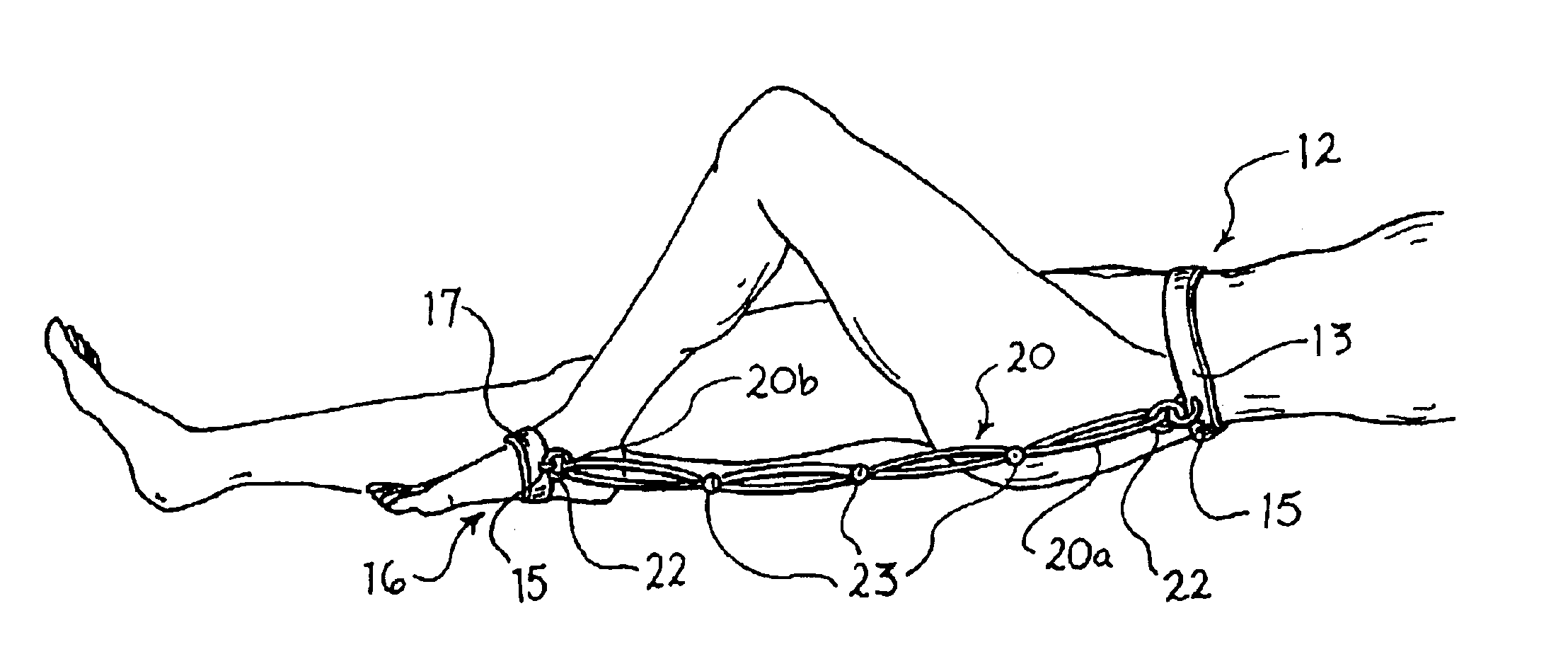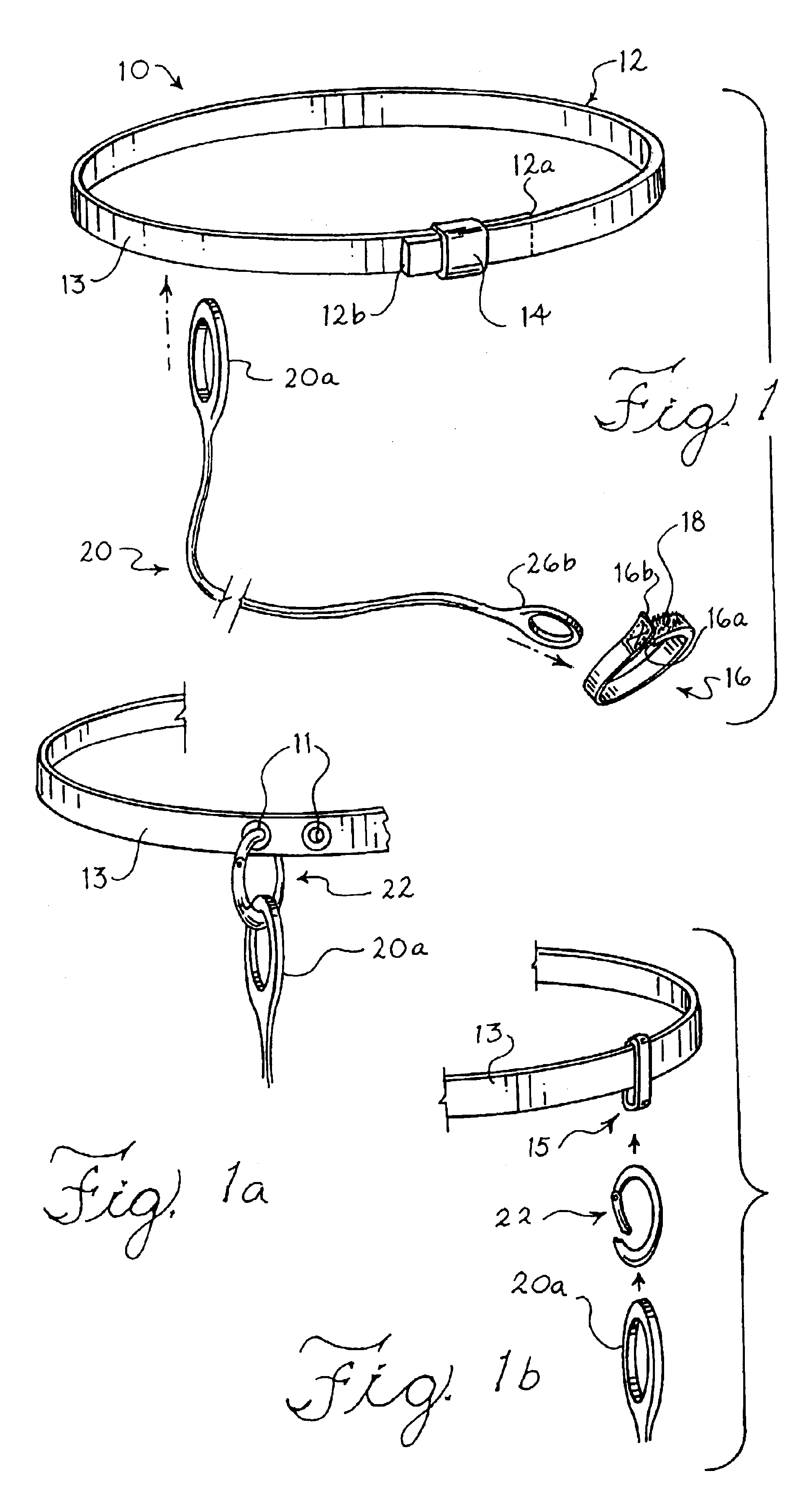Modular resistive exercise system
a resistance exercise and module technology, applied in the field of exercise devices, can solve the problems of wasting and atrophy of the limb muscles of physically challenged persons, the cost of exercise apparatus and devices, and the inability to exercise properly, so as to avoid undue muscular stress or undesirable strain, the effect of resisting tension level and limb muscles
- Summary
- Abstract
- Description
- Claims
- Application Information
AI Technical Summary
Benefits of technology
Problems solved by technology
Method used
Image
Examples
Embodiment Construction
As used herein, the term “limb” refers to either one of the arm or leg appendages of the human body inclusive of the attendant components parts of each respective appendage. The term “limb extremity” refers to the distal or terminal portion of an arm or leg, such as the hand or foot, respectively. The term “limb muscle”, and grammatical variations thereof, refers to the muscles of the associated upper or lower limb, e.g. arm or leg, respectively. The term “torso” includes the portion of the trunk below the neck from the shoulders to the groin.
FIG. 1 shows an exploded view of a preferred embodiment of a modular, resistive limb-muscle exercise system 10 of the present invention. As illustrated, the modular apparatus comprises a torso anchoring module 12, a limb-extremity receiving module 16, and a resilient module 20.
The torso anchoring module 12 can be a cord, band, or belt, having a first free end and a second free end, that can encircle and be releasably secured around a portion of...
PUM
 Login to View More
Login to View More Abstract
Description
Claims
Application Information
 Login to View More
Login to View More - R&D
- Intellectual Property
- Life Sciences
- Materials
- Tech Scout
- Unparalleled Data Quality
- Higher Quality Content
- 60% Fewer Hallucinations
Browse by: Latest US Patents, China's latest patents, Technical Efficacy Thesaurus, Application Domain, Technology Topic, Popular Technical Reports.
© 2025 PatSnap. All rights reserved.Legal|Privacy policy|Modern Slavery Act Transparency Statement|Sitemap|About US| Contact US: help@patsnap.com



